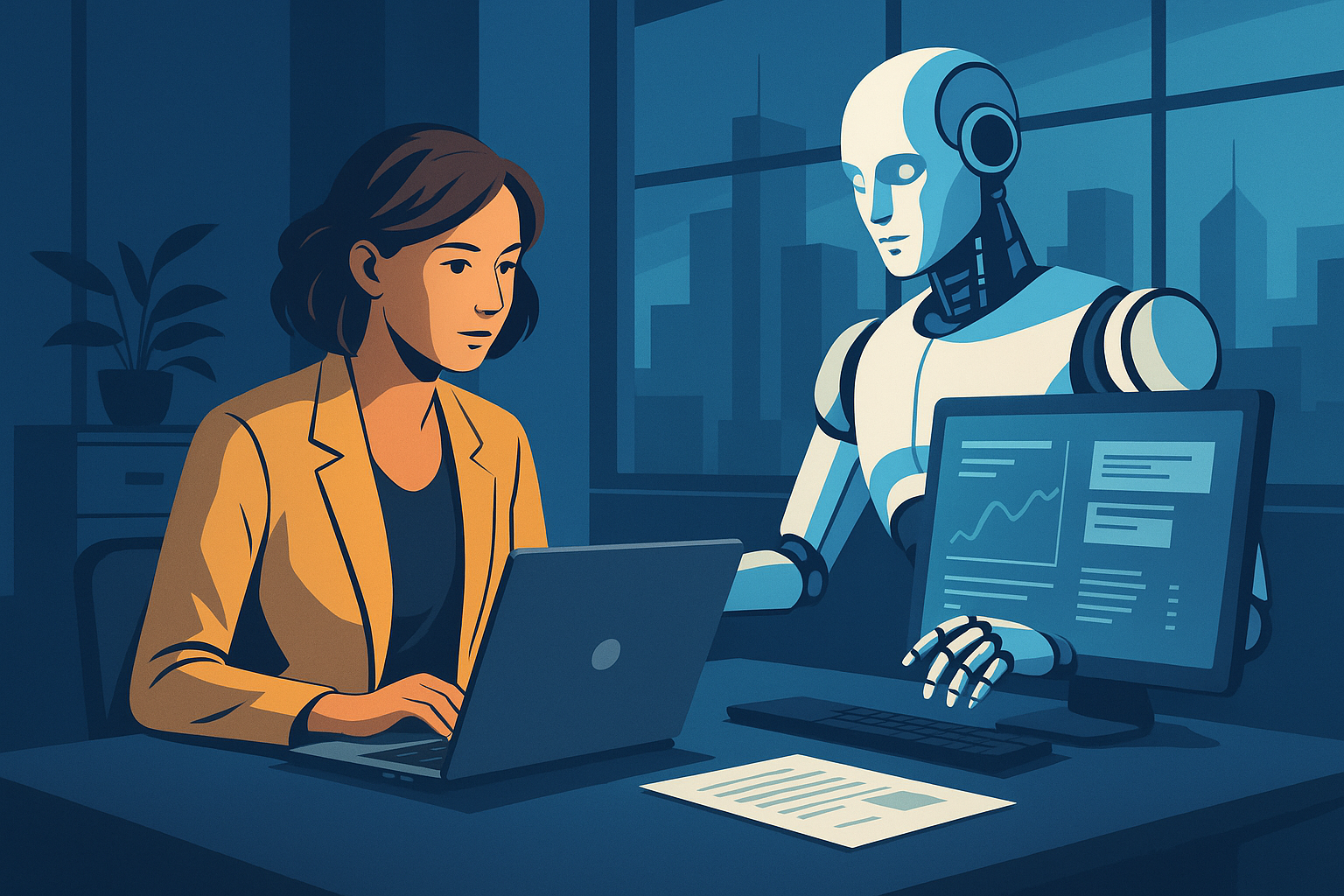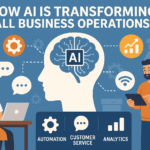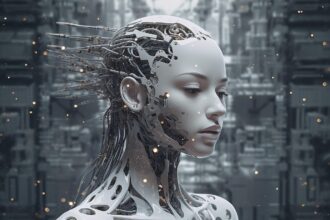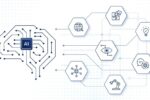The Role of AI in Shaping the Future of Work
The role of AI in shaping the future of work is accelerating in 2025. From automation to decision intelligence, artificial intelligence is transforming how companies operate and how professionals build durable, high-value careers.
Related:
AI vs Traditional Marketing ·
AI Tools for Customer Service Teams
- Understanding the Role of AI in the Workplace
- How AI is Transforming Industries
- Benefits of AI in the Future of Work
- Challenges of AI Adoption
- Future Skills Required in the Age of AI
- Business Case Examples of AI Adoption
- AI and the Human Workforce: Collaboration, Not Replacement
- Global Outlook: AI and Work in 2025 and Beyond
- Strategies for Companies to Adapt to AI
- FAQ
- Conclusion & CTA
Understanding the Role of AI in the Workplace
Artificial intelligence (AI) refers to computer systems capable of performing tasks that typically require human intelligence—such as perception, pattern recognition, language understanding, prediction, and decision-making. In the workplace, the role of AI in shaping the future of work spans three pillars:
- Automation: Streamlining repetitive, rules-based, or high-volume tasks to improve speed, quality, and cost efficiency.
- Augmentation: Providing decision support, recommendations, and copilots that improve human productivity and accuracy.
- Innovation: Enabling new business models, products, services, and experiences that were previously infeasible.
In 2025, organizations deploy AI across customer support, marketing operations, supply chains, finance, HR, and product development. Examples range from AI chatbots handling first-line support to machine learning models forecasting demand or detecting fraud.
Note: Some statistics cited historically (e.g., global GDP uplift projections) vary across studies and methodologies. Always contextualize benchmarks by sector, region, and adoption maturity.
How AI is Transforming Industries
Customer Service
AI-powered service stacks combine chatbots, agent assist, knowledge search, sentiment analysis, and quality monitoring. Benefits include faster resolution, 24/7 coverage, and consistent CX across channels.
Example: A European telecom operator reduced first-line call volume by 40% after deploying an AI chatbot that handled billing resets, plan changes, and basic technical triage—while routing complex cases to human specialists.
Marketing and Sales
Marketing teams leverage AI for creative assistance, audience modeling, media mix optimization, and lifecycle automation. In sales, AI qualifies leads, forecasts pipelines, and suggests next best actions based on real-time engagement signals.
Operational gains: content production time drops, campaigns improve relevance, and sales cycles shorten through predictive prioritization.
Healthcare
In healthcare, AI aids triage, imaging analysis, and patient engagement. Clinical decision support systems surface risk scores and evidence summaries. Remote monitoring and digital front doors expand access, especially in underserved areas.
Case insight: Research in 2023–2025 consistently shows AI-assisted detection can approach or exceed specialist-level accuracy for some imaging tasks; real-world performance depends on data quality, workflow integration, and oversight.
Finance and Banking
Financial institutions use AI for anomaly detection, credit underwriting, personalization, and operational risk management. Explainability and model risk governance are critical for compliant deployment.
Manufacturing and Logistics
Smart factories apply predictive maintenance, adaptive process control, and computer vision inspection to reduce downtime and defects. Logistics providers optimize routes and capacity planning with demand forecasting and simulation.
Benefits of AI in the Future of Work
- Increased productivity — Automation frees skilled talent to focus on creative and strategic tasks.
- Enhanced decision-making — Predictive analytics improves planning, forecasting, and risk management.
- Cost reduction — AI reduces labor on repetitive tasks and lowers error-related costs.
- Personalized experiences — Tailored CX and adaptive learning improve satisfaction and outcomes.
- New value creation — AI unlocks data-driven products and innovative service models.
| Benefit | Impact Example |
|---|---|
| Productivity | Automated reporting saves 10+ hours per employee per week |
| Cost Reduction | Self-service support deflects up to 40% of routine tickets |
| Decision-Making | Demand forecasting improves inventory turns and reduces stockouts |
| Personalization | Adaptive learning platforms accelerate onboarding and upskilling |
| Innovation | New AI-driven services (e.g., predictive maintenance as a service) |
Challenges of AI Adoption
- Job displacement and redesign: Roles with routine tasks face automation; net employment effects depend on reskilling and new demand.
- Bias and fairness: Models can reflect or amplify dataset biases, affecting hiring, lending, or triage decisions.
- Privacy and security: AI amplifies data collection; governance must address consent, retention, and breach response.
- Skills gap: Shortages in data, ML engineering, and AI product management slow time-to-value.
- Compliance and standards: Evolving AI regulations (e.g., model transparency, risk categorization) require continuous alignment.
Future Skills Required in the Age of AI
By the end of the decade, many workers will require reskilling as AI augments or automates job components. Focus areas include:
- Data literacy — reading dashboards, understanding model outputs, and knowing data limits.
- Critical thinking — validating AI suggestions; recognizing confounders and edge cases.
- AI tool proficiency — using content, analytics, CRM, and workflow copilots effectively.
- Human skills — communication, negotiation, creativity, and empathy.
- Cybersecurity awareness — securing credentials, data pipelines, and model endpoints.
Map role-based competencies to targeted learning paths; combine formal courses with on-the-job projects and mentoring.
Business Case Examples of AI Adoption
- Retail marketplace: Recommendation models increase average order value and session length.
- Automotive manufacturing: Computer vision detects defects early, cutting rework costs.
- Streaming media: Personalization engines improve retention and ad yield.
- CPG supply chain: Forecasting models reduce waste and stockouts in perishable categories.
- B2B SaaS: Predictive health scores trigger proactive success interventions.
Signal to watch (2025): AI copilots embedded natively inside productivity suites are shifting from “assist” to “orchestrate,” driving cross-app automations with minimal scripting.
AI and the Human Workforce: Collaboration, Not Replacement
The most resilient organizations design for AI-human collaboration. AI handles data-heavy, repetitive, and precision tasks; humans provide context, judgment, and relationship skills.
Support example: An AI chatbot resolves routine questions; human agents focus on complex, emotional, or novel cases—improving both CSAT and handle time.
Global Outlook: AI and Work in 2025 and Beyond
- United States: Rapid adoption across finance, healthcare, and logistics with strong private-sector investment.
- Europe: Tightening AI governance emphasizes safety, transparency, and data rights.
- Asia: Manufacturing and e-commerce scale AI for productivity and export competitiveness.
- Africa & Middle East: Fintech, agri-tech, and smart-city applications expand access and efficiency.
Strategies for Companies to Adapt to AI
- Invest in training: Fund role-specific AI literacy and hands-on labs.
- Adopt hybrid models: Blend automation with human checkpoints for quality and safety.
- Ensure transparency: Document data lineage, model assumptions, and evaluation metrics.
- Prioritize ethics: Establish bias testing, incident response, and model cards.
- Pilot then scale: Prove value with KPIs before rolling out across business units.
Related reading:
Responsible AI Governance
FAQ
Will AI completely replace human jobs?
AI will automate portions of many roles, but full replacement is rare. The durable pattern is task-level automation combined with role redesign: humans focus on judgment, creativity, and relationships while AI manages repeatable workflows. Net employment effects vary by sector and policy choices around reskilling and innovation incentives.
What industries are most affected by AI in 2025?
Customer service, marketing, healthcare, finance, logistics, and manufacturing are among the most impacted. Education, legal, and public services are adopting AI for research assistance, triage, and case analysis, though regulatory constraints and explainability needs influence pace.
How can professionals prepare for AI-driven changes?
Develop data literacy, master the AI tools in your stack, and strengthen communication and critical thinking. Build a portfolio of mini-projects demonstrating measurable impact (e.g., reduced time-to-resolution, improved forecast accuracy). Certifications help, but applied results matter most.
What are the main ethical concerns with AI at work?
Bias in datasets and models; privacy risks from extensive data collection; opaque decision-making; and security threats. Address these through governance: bias testing, human oversight, audit trails, clear user notices, and robust access controls.
What practical AI use cases can small businesses start with?
Start with agent assist in support, automated FAQ chat, lead scoring and email sequencing in marketing/sales, and lightweight forecasting in ops. These deliver fast ROI with manageable risk and rely on data you likely already have (tickets, CRM, web analytics).
Conclusion: Turning AI into a Competitive Advantage
The role of AI in shaping the future of work is no longer speculative—it’s operational. Organizations that pair ethical governance with targeted, ROI-positive deployments will compound advantages across productivity, quality, and innovation.
Next steps:
- Prioritize one or two high-impact pilots (e.g., agent assist, demand forecasting).
- Launch role-based AI literacy training and a governance playbook.
- Measure outcomes (CX, cycle time, cost, revenue) and iterate.
Keep learning: Explore more on
AI vs Traditional Marketing,
AI Tools for Customer Service Teams,
and Responsible AI Governance.
Subscribe to get weekly briefings on AI and the future of work.







